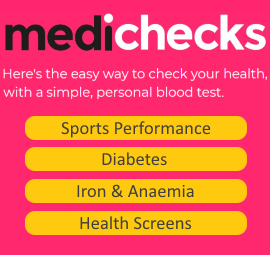Imagine visiting your doctor for a routine blood test and leaving with something far more profound than just your cholesterol numbers. What if that vial of blood could tell whether your body is silently slipping into frailty? This isn't science fiction anymore. With advances in ageing research, scientists are edging closer to decoding frailty not through external signs like walking speed or grip strength, but through the molecules circulating in our bloodstream.
A recent mapping review published in Ageing Research Reviews took on the mammoth task of understanding which blood biomarkers, those tiny, measurable substances in the blood, can reliably signal frailty. This effort could change how we screen, predict, and treat age-related decline.
What Is Frailty and Why Does It Matter?
Frailty is not a disease. It’s a syndrome that captures a person’s diminished resilience to stressors. Think of it as a tipping point. A seemingly minor issue, like a cold or a skipped meal, can spiral into hospitalization or even death in someone who is frail. It's especially common among older adults and strongly predicts poor outcomes like falls, disability, and longer hospital stays.
Traditionally, frailty has been measured using clinical tools. Some, like the Fried Phenotype, focus on physical symptoms such as weakness and exhaustion. Others use broader indices that include comorbidities, cognitive function, and even social isolation. While these tools are powerful, they aren’t always practical in fast-paced clinical settings. Many require physical assessments, subjective reporting, or access to a lot of patient data.
This is where blood-based biomarkers enter the scene. If we can identify a set of molecules that reliably indicate frailty, we can develop fast, scalable tests. But up until now, no single protocol has emerged as the gold standard. That’s exactly what this review set out to explore.
How the Study Was Designed: A Mapping Review Approach
The authors conducted what’s called a mapping review. Instead of conducting new experiments, they reviewed existing studies, 72 in total, that evaluated blood biomarkers in adults aged 65 and older. All participants were community-dwelling, meaning they weren’t living in hospitals or care homes.
Crucially, the researchers didn’t just tally up which biomarkers were mentioned. They introduced a new statistical tool called a weighted correlation index (CI) to measure how consistently a biomarker was linked to frailty. This CI accounted for how many studies looked at each biomarker, how large those studies were, and whether the association remained strong even after adjusting for other factors.
The result was a ranked list of biomarkers, organized by how reliably they signal frailty.
Biomarkers That Consistently Rise with Frailty
Among the most robust findings were several biomarkers related to inflammation and metabolic dysfunction. These include interleukin-6 (IL-6), high-sensitivity C-reactive protein (hs-CRP), neopterin, white blood cell count (WCC), glycated hemoglobin (HbA1c), and sex hormone-binding globulin (SHBG).
IL-6 and hs-CRP are classic markers of inflammation. Their rise in older individuals reflects what gerontologists call inflammaging, a chronic, low-level inflammation that worsens with age. Neopterin also signals immune system activation. Together, these biomarkers reveal a body stuck in a loop of immune stress, even when there’s no obvious illness.
HbA1c measures average blood sugar levels over months. Elevated values here suggest metabolic strain, which has been tied to muscle loss and poor recovery from illness. SHBG regulates sex hormones and tends to rise when testosterone availability drops, something that may accelerate frailty in men.
Markers That Drop as Frailty Increases
Not all changes are about excess. Some of the most telling biomarkers show a consistent decline in frail individuals. These include hemoglobin, 25-hydroxy vitamin D (25OHD), free testosterone in men, and albumin.
Low hemoglobin levels point to anemia, a well-known risk factor for fatigue, muscle weakness, and cognitive decline. Vitamin D deficiency affects bone strength, balance, and immune function, all of which are critical in preventing frailty. Albumin, a protein made in the liver, reflects both nutritional status and inflammation. Its decline is often a red flag for poor health outcomes.
Interestingly, free testosterone in men showed one of the most consistent negative associations. This aligns with what’s already known. Testosterone plays a key role in maintaining muscle mass, energy, and mood.
Not All Biomarkers Are Equal
The review didn’t just focus on hits. It also flagged biomarkers that showed inconsistent or weak associations. Some lipid markers like LDL and total cholesterol had mixed results. Others, like creatinine, didn’t hold up after adjusting for confounding factors. That matters because relying on poor predictors can muddy diagnoses and lead to unnecessary interventions.
One surprising twist came from the marker cystatin C, which reflects kidney function. Unlike creatinine, it isn’t skewed by muscle mass. That’s a major plus when evaluating older adults. The few studies that looked at cystatin C showed a negative association with frailty, hinting at its promise as a more reliable marker for ageing kidneys.
Gender Differences and Data Gaps
A fascinating part of the review involved sex-specific findings. Some biomarkers, like testosterone and SHBG, behaved differently in men and women. Others, like IL-6 and WCC, showed stronger associations in women. Unfortunately, most studies didn’t break down their data by sex. This leaves a glaring gap in understanding how frailty manifests differently in men and women, a gap future research must address.
Moreover, the researchers noted that many studies used univariate analysis, which doesn’t control for confounding factors. This weakens the reliability of the findings. Only a handful used multivariable models, which are more rigorous. Until more high-quality data emerges, clinicians should interpret biomarker readings with caution.
Clinical Promise and the Road Ahead
The takeaway from this mapping review is both exciting and sobering. We now have a clearer picture of which biomarkers align with frailty. Several, like IL-6, CRP, and hemoglobin, appear consistently in the data. But the journey from lab to clinic is not complete.
We still need better models, more diverse study populations, and an agreed-upon biomarker panel. The end goal is clear. To create a simple blood test that flags frailty risk early, before the first fall, before the first hospitalization. That’s how we shift from reactive care to preventive action.
For now, doctors and geriatricians can use these findings to supplement their clinical judgement. When an older adult shows rising inflammation markers and dropping albumin, it’s worth asking if frailty is developing beneath the surface.
Conclusion: Blood Is a Mirror to Frailty
This review doesn’t give us a miracle marker. But it gives us a powerful toolbox. By looking at the right combination of biomarkers, we can spot frailty earlier and intervene smarter. Ageing is inevitable. Frailty does not have to be.
The study is published in the journal Ageing Research Reviews. It was led by researchers from Institute for Geriatric Research Ulm University Medical Center Ulm, Germany.






